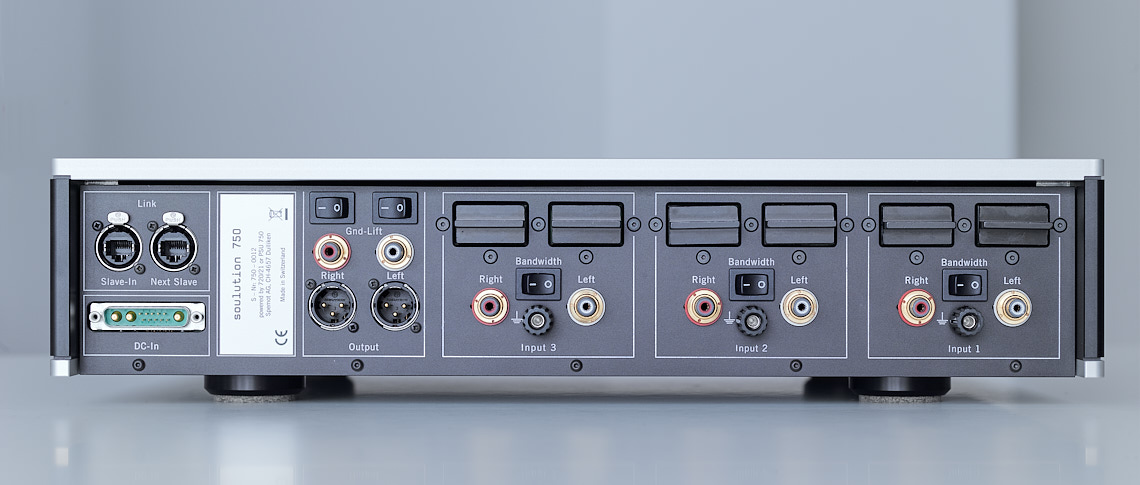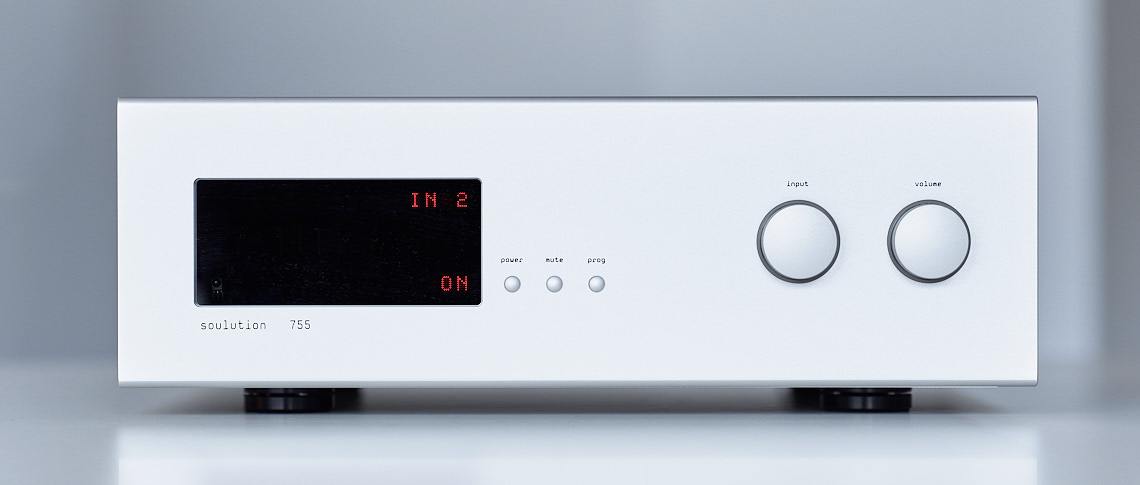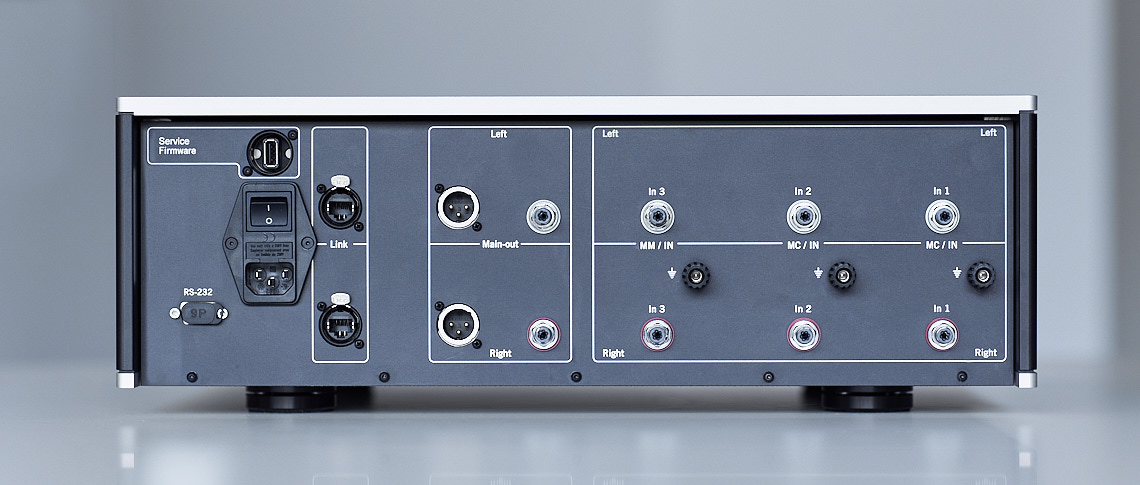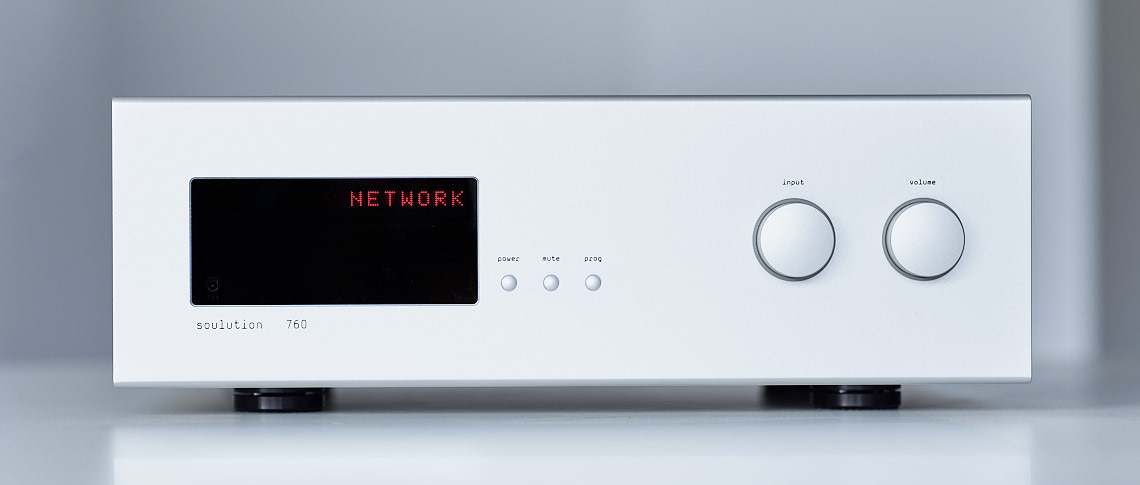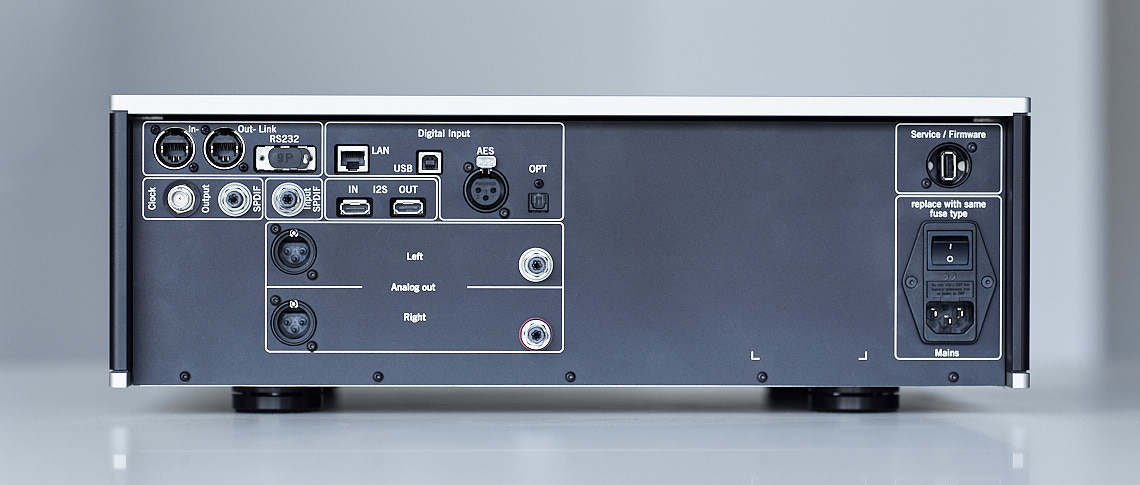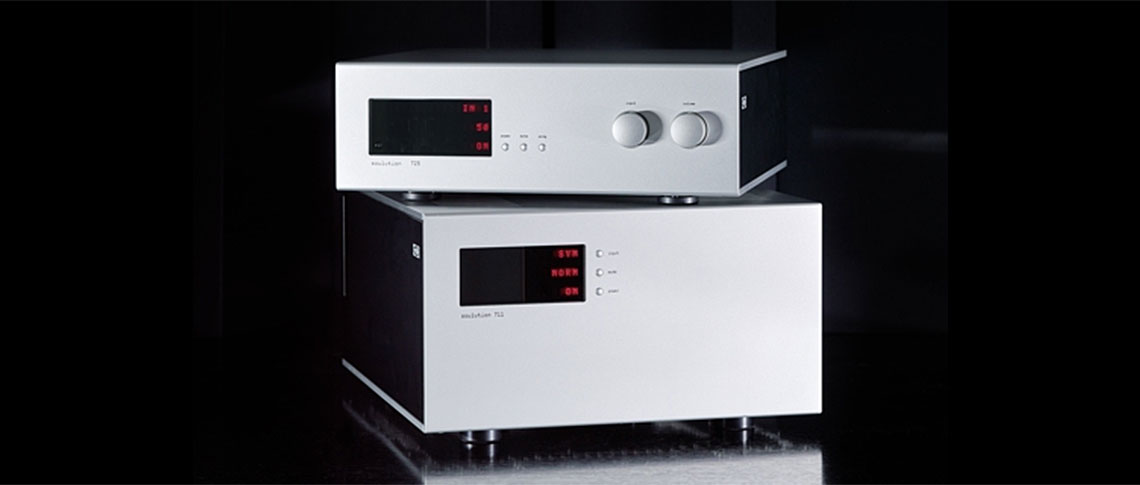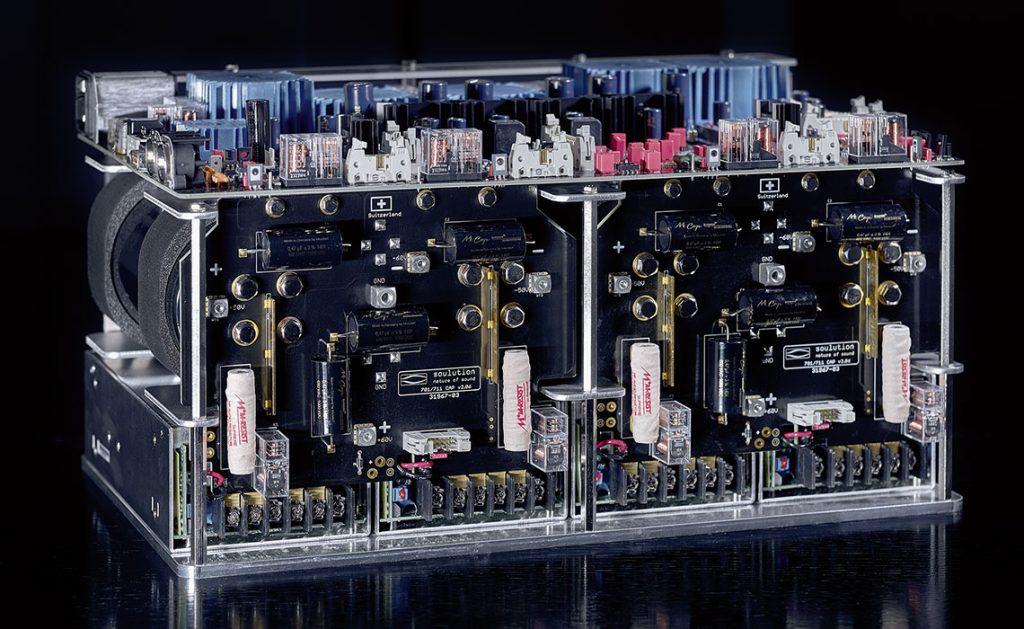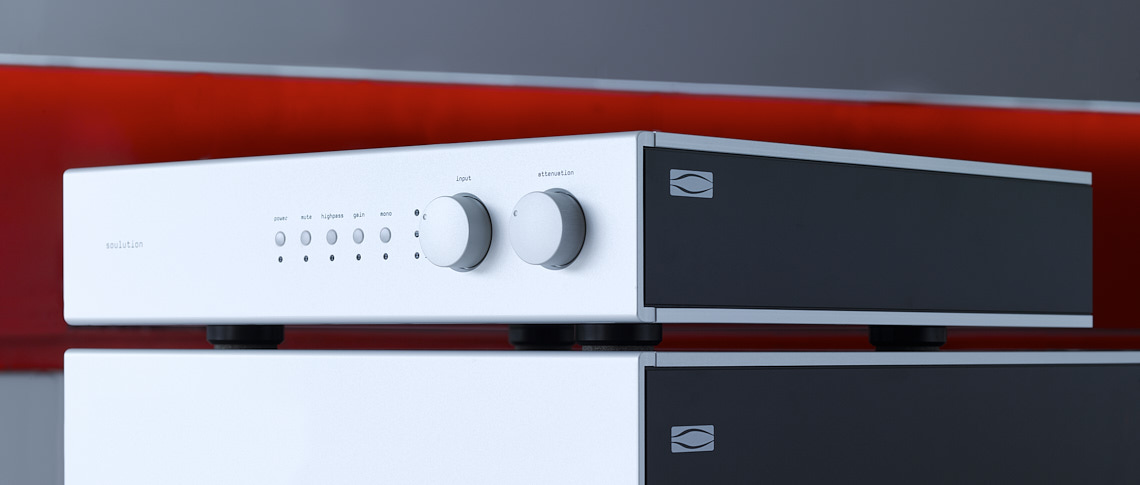
Complete silence inside. No alternating current. No transformers. No stray fields. Perfect conditions for the multi-stage, low noise amplifier to perform at its absolute best. The height of achievement in phono amplification. An audiophile’s dream that until now had simply not been realized.
Now analogue records really can sound their best. Their most captivating ever.
Highlights
Philosophy
Building the ideal phono amplifier is the ultimate challenge for audio designers. It must work with the extremely low signal levels of moving coil (MC) cartridges while achieving low noise, low distortion, high channel separation and maximum linearity. It must provide up to 80dB gain – equivalent to raising the signal level by 10,000 – yet must exhibit level and phase accurate behaviour while adhering strictly to RIAA-IEC equalisation standards.
Design
The soulution 750 (three MC inputs) and 751 (two MC inputs, one MM input) have risen to this design challenge supremely well. Based on an advanced design around an ultra wide band (1 MHz/– 3 dB) multi-stage amplifier, both are built with the very highest quality components.
For all inputs the gain factor and the terminating impedance are freely selectable. The working bandwidth may also be chosen from either Low (200 KHz) or High (1 MHz) to within – 3 dB. To suppress rumble from warped records there is an IEC subsonic filter (< 20 Hz) which will protect loudspeakers against hazardous cone excursions. On the 750/751 there is also a key to select mono operation.
A front panel level control allows sound level balancing across the three inputs.
Phono module (equaliser)
The challenges to the ideal phono amplifier are immense and represent the «pièce de réstistance» for every designer of high-class audio amplifiers. With a gain of up to 80 dB (which equals an amplification factor of 10,000) the amplifier is expected to show a level and phase true behaviour, i.e. an ultra wideband quality (internal amplifier bandwidth 1 MHz/– 3 dB). At the same time it is to compensate the equalisation curve in accordance with RIAA-IEC standards. This can only be realised by means of a multi-stage amplifier concept using super-grade components.
Output stage
The output stage of the 750/751 is optimized for velocity, precision and current capability thus ensuring all the musical detail is passed to attached pre/amplifiers. Furthermore it is stable with interconnects of any length and has a bandwidth that extends to 40 MHz (– 3 dB), ensuring every musical detail is reproduced true to life. The result is a three-dimensional, spatial sound of uncanny accuracy and detail.
Power supply
Above all a phono amplifier needs an electrically quiet environment. To eliminate any chance of interference from the power supply, the 750/751 is powered entirely by either pure DC from an associated 720/721 preamplifier or from a dedicated soulution external supply. This removes any AC mains voltages or stray magnetic fields.
Specifications
| Mains | externally via 750 PSU or 725 | |
| Power consumption | < 0.5 W standby 20 W device in operation |
|
| Inputs | 750: 3 × MC (RCA) 751: 2 × MC, 1 × MM (RCA) |
|
| Input impedance | MC: 10 Ω – 1000 Ω MM: 47 Ω – 47 kΩ and 0 – 750 pF |
|
| Outputs | 1 × balanced (XLR) 1 × unbalanced (RCA) |
|
| Frequency response (– 3 dB) | 0 – 1 MHz | |
| THD + N | < 0.006% (20 Hz – 20 kHz) | |
| Signal-to-noise ratio | 100 dB | |
| Channel separation | 60 dB @ 1 kHz | |
| Gain (max) | MC: MM: | + 66 dB balanced + 60 dB unbalanced + 54 dB balanced + 48 dB unbalanced |
| Volume control range | 0 to – 15 dB in 3 dB steps | |
| Output impedance | 10 Ω unbalanced (XLR) 10 Ω unbalanced (RCA) |
|
| Output voltage | 7 VRMS balanced (XLR) 3.5 VRMS unbalanced (RCA) |
|
| Output current max | 0.2 A (limited) | |
| Dimensions | 480 × 117 × 450 mm (W × H × D) |
|
| Weight | approx. 17 kg | |
| LINK (remote turn-on) | 12 V control signal | |
